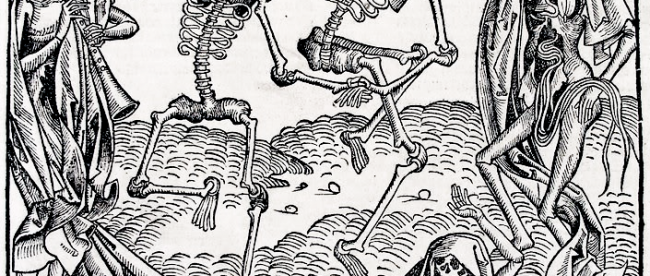How The Dead Brought Death To Norway

The Black Death — or simply the Plague — was shockingly devastating. It spread throughout Europe, Northern Africa, and Asia, basically unchecked, for about a decade in the mid-1300s, claiming the lives of between 30 and 60% of Europe’s population and another 33% of the population in the Middle East, and a difficult-to-estimate amount in Northern Africa. In total, the plague may have been responsible for as many as 200 million deaths.
The disease is caused by a bacterium called Yersinia pestis which originated in the grasslands of Northern Africa and was carried north by rodents. Vermin infected humans as well as other vermin, and as rat and flea populations spread, so did the plague.
If you were in Scandinavia, though, you were relatively safe. It’s not easy to travel from Western Europe to Norway without a plane or a ship, and planes weren’t a thing at the time in 1349. Ships were, but the Scandinavian countries knew of that plight of their neighbors and had time to prepare. Norway came up with a rather simple and not very creative plan to keep the plague from entering its shores: merchant ships were held at the dock in quarantine until they could be inspected. If the ship had signs of rat or flea infestation, it was turned away; otherwise, the crew (if in good health) and supplies were allowed to disembark as planned. Until that determination could be made, though, crew and stores were held in abeyance at the harbor.
It was a great plan — until it went wrong.
The problem with quarantines is that the people on board the ship need to abide by it — there’s really nothing preventing them from deciding, unilaterally, to come ashore. Sure, the host country could threaten their lives, but what if that didn’t matter to the crew? In 1349, an English ship carrying a shipment of wool ran aground near the Norwegian harbor city of Bergen, and it’s safe to say that no one on board cared about how the people of Norway would react to this obvious violation of the quarantine protocol.
The reason? All the people on board were already dead. When the crew left England, everyone was in relatively good health — sick patients weren’t going to be allowed aboard. But, as io9 reported, “during its journey, crew members started dying. Attempts to quarantine the sick [in their cabins] failed. The plague took one person after another, until every last crew member died.” The Black Death had claimed the lives of the crew — but only the crew.
The creatures that brought the plague onto the ship — the rats, fleas, etc. — they survived. And then, a stroke of historically bad luck hit. The “ghost ship” could have ended up basically anywhere (or even stayed at sea basically forever), but, unfortunately for Norway, it crashed into its coast. The rats got out and spread the plague throughout the country. From there, the Black Death spread into Sweden and Russia, too, leading to countless more deaths.
Bonus fact: The plague came to Scotland in a more karmically-designed way. According to the BBC, when Scotland heard that England had been stricken by the disease, the Scots saw it as divine intervention: they “declared that it had befallen them through the revenging hand of God.” Following that logic, Scotland invaded England, expecting England’s defenses to be worn down from the previous battles. So Scotland marched on its neighbor to the south, and in doing so, Scotland’s soldiers were exposed to the bacteria — which they brought back with them when they retreated.
From the Archives: Dying At All is Not Allowed: The place in Norway where you’re not allowed to die.
